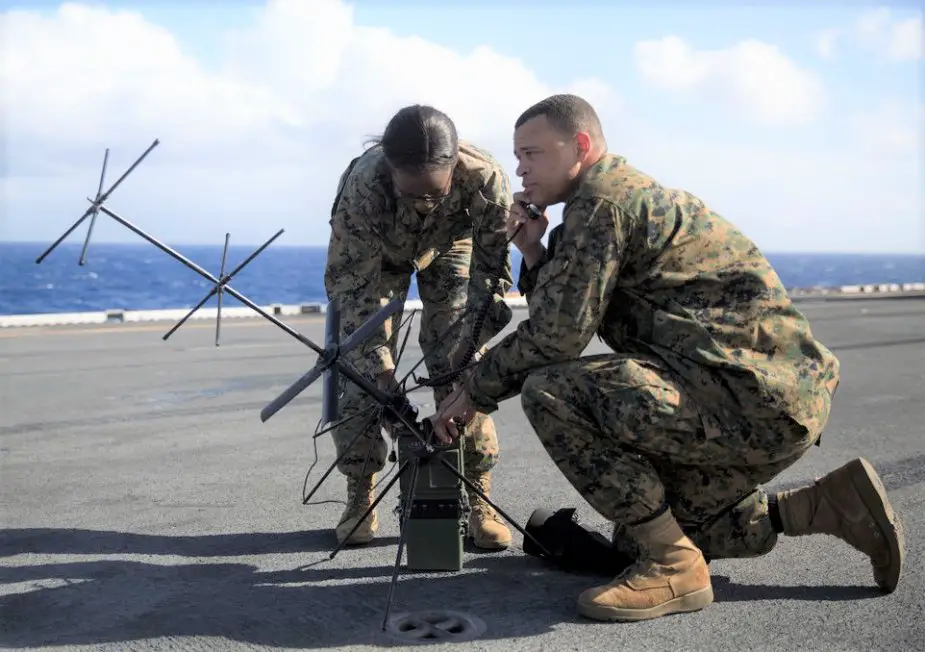Breaking news
USMC satellite communication system exceeding performance expectations.
U.S. Marine Corps Systems Command is updating its tactical satellite system that provides increased communication on the battlefield. Based on field user evaluations, the upgraded technology is performing beyond expectations. Matt Gonzales, Marine Corps Systems Command, reports.
Follow Army Recognition on Google News at this link
U.S. Marines operate an AN/PRC-117G radio aboard amphibious assault ship USS Bataan, March 6 (Picture source: USMC/Lance Cpl. Autumn Bobby)
The Mobile User Objective System is a next-generation, narrowband satellite communication capability that enables Marines to connect to SATCOM networks. It encompasses updated firmware to the AN/PRC-117G radio system and one of three antenna kits that help users simultaneously access these networks.
Initially fielded in March 2019, the system enables mobile or stationary Marines to leverage cellular technology to increase access to voice and data communication. It also improves overall reliability in urban environments. “MUOS gives us a 3G capability using satellite constellations,” said Lt. Col. Jeff Decker, MCSC’s Ground Radios product manager. “It is similar to a cell phone capability in the sky that covers the entire globe. We try to figure out anything that could be a possible issue for the warfighter. This helps to validate the concept of operations, and it allows us to provide lessons learned to other MEFs”.
The 3G networks used with MUOS remain far superior to the Marine Corps’ legacy SATCOM channels, said Decker. He noted that the Ground Radios program office continues to monitor the latest technologies and looks toward working with other services for future incremental improvements to the capability. “We’re looking to support the warfighter with a lethal and sustainable capability, which is the command’s focus,” said Decker. “The more robust and resilient the capability, the more we can start adding on back-end systems to help Marines. MUOS is changing the way we look at a tactical satellite architecture.”
From March to May 2020, MCSC conducted various field user evaluations with I Marine Expeditionary Force at Twentynine Palms, California, to assess an updated version of MUOS that increases network stability while executing missions.
During the testing, Marines participated in fire support simulation exercises where they employed MUOS for coordinated air strikes and mortar support. They also used the technology during scenario-based exercises that involved rehearsing command and control operations. “We tested the system through user evaluation exercises to understand not only what the capability can do on paper, but how we can use it to increase lethality and provide redundancy across the [Fleet Marine Forces],” said Decker.


























